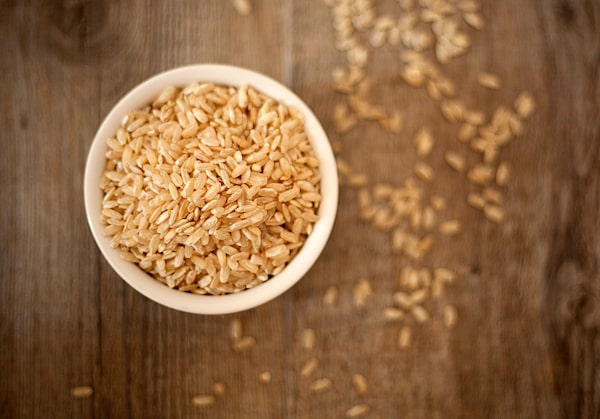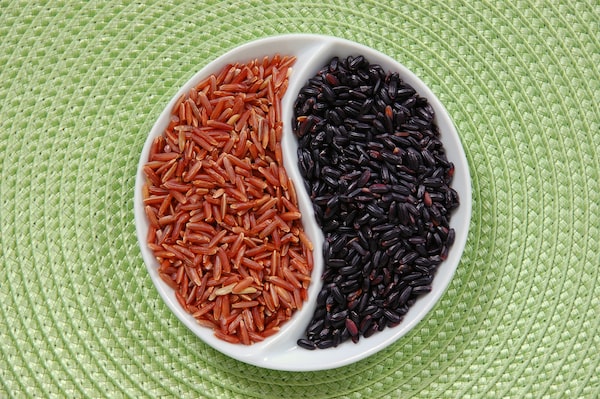Question: What’s the most nutritious rice to eat? – brown, wild, black or red? Is enriched white rice a good choice?
Answer: If you’re trying to add more whole grain foods to your diet, brown rice probably has a spot on your menu. But brown rice isn’t the only whole grain rice you should be eating.
Black, red and wild rice are whole grains, too, and boast impressive nutrient profiles. And some even rival fruits and vegetables when it comes to certain antioxidants.

Brown rice doesn't cause a sharp rise in blood glucose and insulin.iStockPhoto / Getty Images
What are the health benefits of each type of rice?
Whole-grain
Plenty of studies have found that a regular intake of whole grains protects against heart disease, stroke, type 2 diabetes and colorectal cancer. Whole grains are also part of a dietary pattern tied to a lower risk of Alzheimer’s disease.
And thanks to their fibre content, whole grains help nourish beneficial gut bacteria, microbes thought to help reduce the risk of allergies, inflammatory bowel disease and obesity.
Unlike white rice, which has been milled to remove the outer bran layer and the nutrient-rich germ layer, whole-grain rice packs in far more vitamins, minerals and fibre. It’s also a good source of disease-fighting phytochemicals.
Enriched white rice has added thiamin (B1), riboflavin (B2), niacin (B3) and iron to replace what’s lost during milling. But many other nutrients that were stripped away – e.g. B6, vitamins E and K and a long list of minerals – aren’t added back. (In Canada, enrichment of white rice is voluntary.)
Whole-grain rice, even though it’s not enriched, outranks enriched white rice when it comes to nutrition. Include the following varieties in your regular diet – toss them into salads, mix them into pilafs or stir into soups.
Brown rice
Compared with white rice, brown rice has more protein and five times more fibre, providing 5.5 g and 3.2 g of each, respectively, per one cup cooked.
Brown rice is an exceptional source of manganese (one cup supplies 88 per cent of a day’s worth), a trace mineral needed for normal nerve and brain function. The mineral is also used to make superoxide dismutase, an antioxidant enzyme that combats harmful free-radical damage in the body.
The whole grain also delivers plenty of blood-sugar-regulating magnesium and selenium, a mineral that’s used to make DNA and thyroid hormones.
And, like other types of whole-grain rice, brown rice scores low on the glycemic index scale, meaning it doesn’t cause blood glucose and insulin to rise sharply. White rice has a high glycemic index.
To cook brown rice evenly, try the pasta method to cook the rice in a large pot of boiling water until tender, then drain the excess water.

Black rice has more fibre and protein than red rice.iStockPhoto / Getty Images
Red rice
This whole-grain rice is grown in France, Bhutan, Thailand and the Himalayas. It gets its burgundy colour from anthocyanins, phytochemicals with potent anti-inflammatory and antioxidant properties.
Also found in berries, red grapes and eggplant, anthocyanins are thought to help guard against cardiovascular disease, type 2 diabetes and Alzheimer’s disease.
One cup of cooked red rice provides 4 g of protein and 2.5 g of fibre. It’s also an exceptional source of numerous minerals, especially magnesium and manganese.
To cook red rice, combine one cup of rice with 1.5 cups of water or broth. Boil, cover and reduce heat, and then simmer until cooked (20 to 40 minutes depending on the variety).
Black rice (Forbidden rice)
This medium-grain rice owes its deep purplish black hue to anthocyanins, and plenty of them. According to a study reported by the American Chemical Society in 2010, spoonful per spoonful, black rice bran contains more anthocyanins than blueberries.
Black rice has more satiating fibre (3 g per one cup) and protein (6 g per one cup) than red and brown rice. Like other types of whole grain rice, it also delivers lots of magnesium and manganese.
Black Japonica rice is a mix of Asian black short-grain rice and medium-grain mahogany rice grown together in the same field.
To cook black rice, use a 2:1 ratio of water to rice and bring to a boil, then cover and simmer until cooked, 40 to 50 minutes. Consider cooking a batch of black rice and freezing it for later use.
Wild rice
Technically, wild rice is an aquatic grass seed, but it’s considered a whole grain and used in dishes as you would rice.
Wild rice has slightly more protein than other whole grain rices (6.5 g per one cup cooked) and the same amount of fibre (3 g per one cup). It’s also a good source of folate, a B vitamin that’s needed to make and repair DNA in cells, along with magnesium and zinc.
Leslie Beck is a registered dietitian.
 Leslie Beck
Leslie Beck